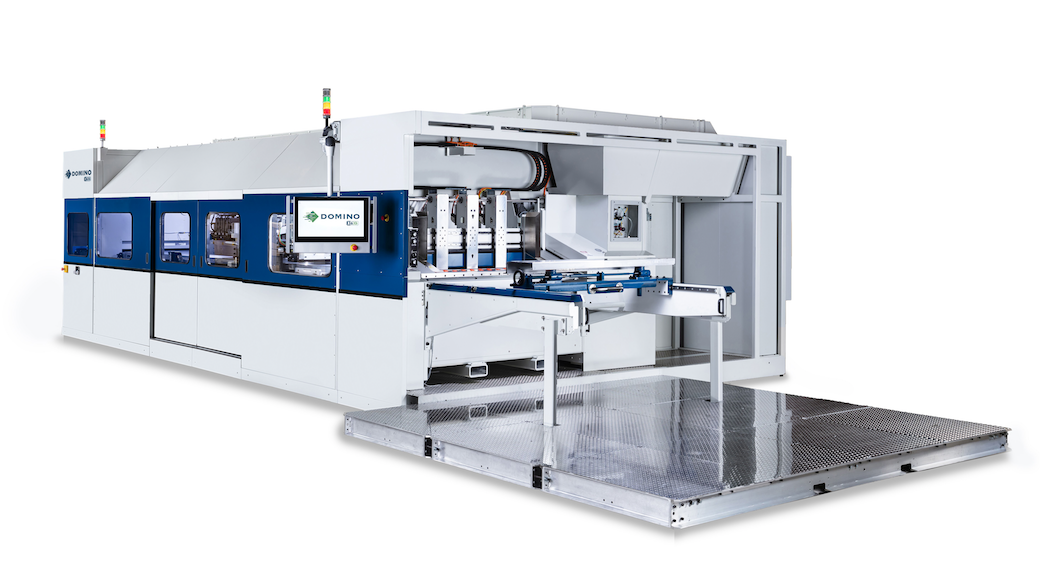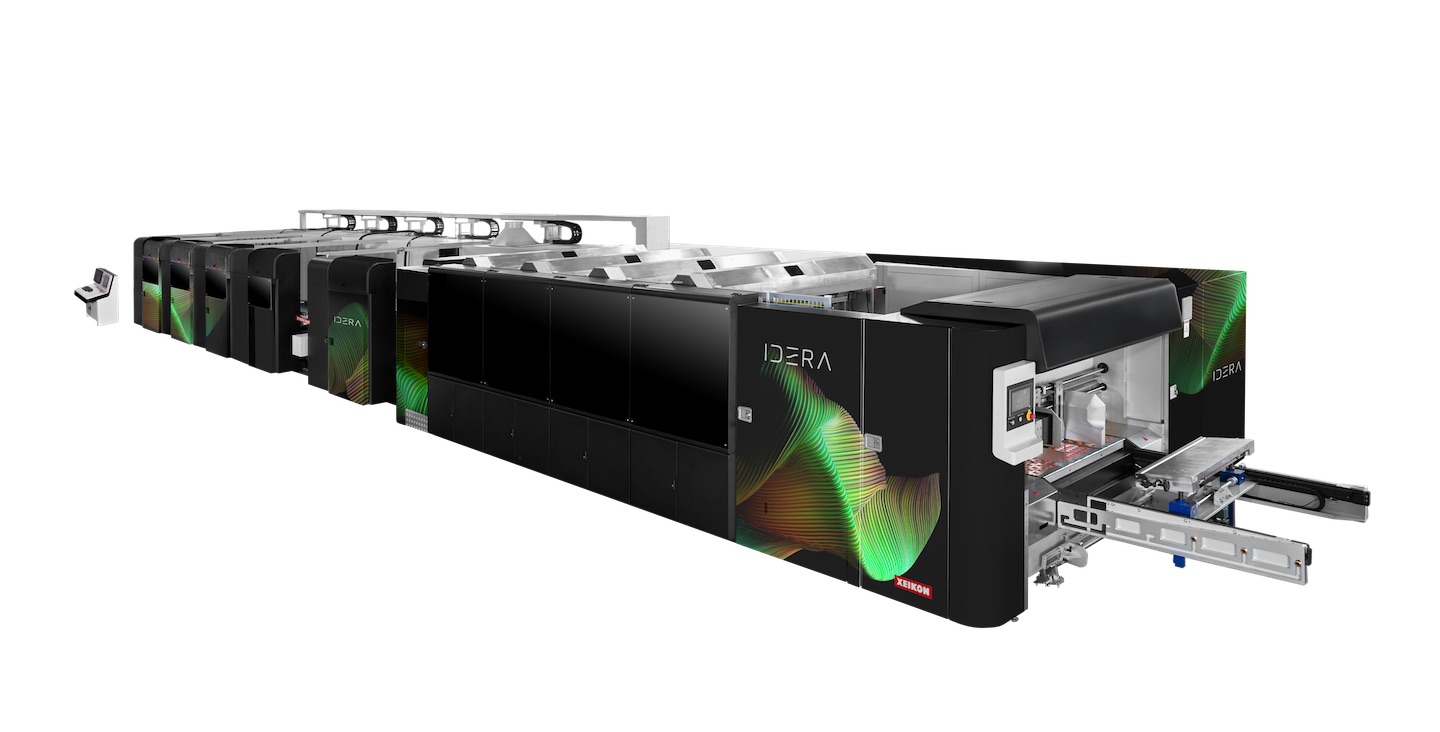Printed corrugated board, whether as a shipping carton, packaging or even a display, means an enhancement of the contents and the material which should not only entice buyers to purchase this or that product, but also strengthen customer and brand loyalty. By Sabine Slaughter
Digital printing presses enable more individuality and thus ensure personalised corrugated products. This trend, which is currently attracting attention not only in the high-priced segment, will intensify in future. Many press manufacturers agree on this, even if so far "only" a vanishingly small proportion - 0.76 per cent - are printed individually with inkjet. This is according to the Smithers Institute. But where there are opportunities, they will be exploited, and the new digital presses for corrugated offer companies the chance not only to enter this lucrative sector but also to help shape it.
Currently, by far the largest share of corrugated is unprinted. Of the total corrugated board produced - 255 billion square metres in 2019 - 135 million tonnes was made into corrugated box. The printed part of this in turn was much smaller despite offering countless opportunities, especially for marketing.
From time immemorial, it has needed a supply and the means to produce cost-effectively and -efficiently. Marketers want to take advantage of the many options available to them. And printers are providing them - by investing in the latest technology to create opportunities for applications that were previously impossible or difficult to achieve. This requires robust machines that are not only reliable, accurate and repeatable, but also cost efficient, effective and sustainable. This time seems to have come, because that is exactly what the new offers from well-known companies in the industry promise.
We took a closer look at the new digital presses for corrugated:
Xeikon Idera
With the Idera, the company introduces a platform that incorporates single-pass inkjet technology. Designed for the post-print flexo market for printing on coated and uncoated corrugated sheets, speeds of up to 150 metres per minute can be achieved. To achieve food safety, the printheads print 600 dots per inch with pigmented water-based inks on a maximum print area of 1.6 x 2.8 metres sheet size (minimum: 450 x 400 millimetres). Xeikon's inks, specially developed for this application, as well as the profiling tools and the Xeikon workflow ensure a harmonious, exact, repeatable print image. Xeikon has integrated various goodies for this purpose, such as a camera inspection system, comprehensive automation and tools, as well as feeders and pile feeders, but also sensors for material curvature/bending so that the print head is not damaged. Of course, the company's own workflow and service offerings are also provided with the Idera platform.
So conventional service plans can be booked, as well as project management, technical and commercial add-on support. As Sebasien Stabel, Market Segment Manger Carton Packaging at Xeikon explains, "Xeikon believes in a consumption-based model. The model allows the printing company to control every component of the press and therefore the running costs."
While the first version of the Idera platform has now been unveiled, future updates and enhancements will also be made on-site. This future-proofing enhances the value of the press. Xeikon places particular emphasis on press performance and reliability, which is driven by the interaction between consumables (ink, primer, varnish, ...).
In order to achieve even brighter colors and higher color density as well as to limit the ink consumption on uncoated materials, the Idera platform has an inline primer unit.
When asked about the transition point, from when the Idera technology is more economical, says Sebastien Stabel: “Many factors will define the point of intersection. Which conventional technology do you compare with and consider additional parameters such as ink coverage, number of drafts, supply chain optimization, sheet imposition, postpress, ... We see digital technology as a complementary technology that can perfectly coexist with flexo and litho. Certainly it is more competitive and cost effective for 'small' runs, but there is more to consider, such as the speed of the market launch, the flexibility and the possibilities of alternative business models. "
The company has proven to be a trustworthy consultant, supported by the Flint Group, whose industry knowledge and skills in combination with Xeikon's proven knowledge in the field of digital transformation. A high throughput per square meter with a digital post-print single-pass printing machine offers “the best economic prospects with Xeikon-compliant water-based inks and profiling tools to increase printing performance and costs,” explains Sebastien Stabel. "The digital transformation capability is supported by our own digital work processes and services," where service will be an essential part of the offer. Koenig & Bauer Durst Delta SPC and CorruJet
Koenig & Bauer Durst Delta SPC and CorruJet
The Delta SPC 130 prints on small formats of 5000 x 600 millimeters up to very large formats with maximum dimensions of 1,300 x 21,100 millimeters (optionally 1,300 x 2,800 millimeters) and a thickness range between 1 millimeter and 12 millimeters, with a maximum resolution of 800 print points per inch.
The CorruJET is designed for the highly efficient production of corrugated cardboard sheets. It has a sheet width of 1,700 millimeters and a sheet length of 1,300 millimeters (with cliché cylinder). The minimum sheet size is 750 x 520 millimeters and a thickness of 1 - 8 millimeters. It prints with a resolution of 1,200 x 1,200 or 1,200 x 600 dots per inch.
“We print on both uncoated and coated media on the Delta SPC 130 without pre-treatment. The pretreatment by the digital primer is used to expand the substrate range and to open up new applications. The CoruJET 170 uses a different ink formulation to cover a slightly different range of jobs. For this reason, we recommend using the inline pre-coating station. The CorruJET is supplied with a primer station as standard. Pre-coating is mandatory for coated media - and is recommended for good and high quality on uncoated media. Medium and lower quality can also be produced without it, ”says Robert Stabler, Managing Director, Koenig & Bauer Durst.
We have developed our own water-based inks for printing, which meet the requirements for primary food packaging. Different print heads are used depending on the application as well as the performance and quality requirements. Both the inks and service plans (maintenance) are available from Koenig & Bauer Durst.
“Retrofit technologies are being introduced for all platforms in our portfolio. First and foremost, we have an optional primer station on the Delta SPC 130 for corrugated cardboard production to expand the range of printable applications, and we also have special colors (orange and purple) for our 5th and 6th color stations, ”explains Robert Stabler. A digital primer station that does not contain clear ink enables special effects to be achieved through targeted use of dot positioning. “We carry out a digital inline priming. By partially using the digital primer - even within a picture or design detail - we can create print finishing effects to enhance our print products and meet the requirements for high-quality packaging, "adds Robert Stabler.
Regarding the transition point at which the digital production of corrugated cardboard prints becomes more economical, Robert Stabler believes that this depends from customer to customer and from application to application. However, he sees that products with a print run of 5,000 to 10,000 copies will be converted to digital.
Regarding the transition point at which the digital production of corrugated cardboard prints becomes more economical, Robert Stabler believes that this depends from customer to customer and from application to application. However, he sees that products with a print run of 5,000 to 10,000 copies will be converted to digital.
“We have the most productive machines on the market for those who want to print millions of corrugated boxes or folding boxes. As mentioned before, combined with the high level of automation, we can print an extremely wide range of applications, including primary and secondary food packaging. Each of our portfolios solves different customer problems. The core of our construction principles - and thus our value proposition - is a high degree of industrial design for high productivity and reliability in multi-shift operation. We also focus on water-based printing inks that meet the requirements for primary food packaging, ”concludes Robert Stabler.
 Domino X730i
Domino X730i
The Domino X630i is a digital printing machine with single pass inkjet technology that prints up to 75 meters per minute or 4,500 sheets per hour, with a print resolution of 600 x 600 print points per inch and a maximum sheet format of 1,600 x 3,000 millimeters. It has a servo-controlled leading edge sheet infeed for continuous feeding, cleaning, inspection, unique vacuum sheet transport, drying with either bundle or stack output options.
The X630i is based on Domino's Generation 6 inkjet platform. The X630i implements the Domino i-Tech components, which together make a more flexible and reliable system overall. i-Tech CleanCap is an automated solution for cleaning and capping inkjet printers for reduced maintenance. i-Tech ActiFlow offers continuous ink circulation for more consistent print results. i-Tech StitchLink achieves a precise alignment of the print head in order to deliver quality printing results.
The versatile Domino AQ95 water-based ink set, including i-Tech PolyM with polymer particles, combines the ability to reliably print on coated and uncoated corrugated board material without the need for a primer or separate adhesion promoter, while ensuring compliance with food packaging.
